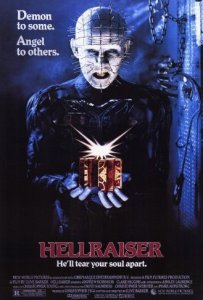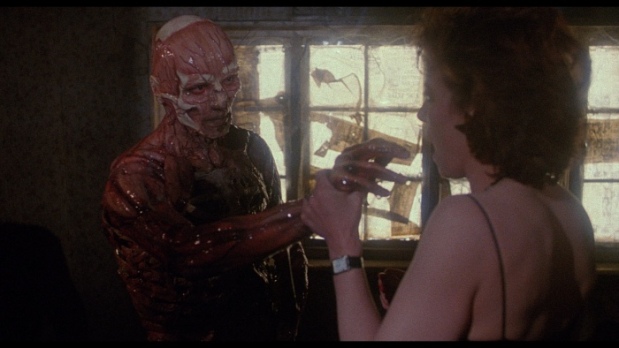The horror genre is typically dismissed as distasteful, uncultured schlock, and most of the time, it is. But every once in a while you get someone who crafts something a little off the beaten path, something that uses horror as a means to tell a story rather than just making another horror story. Clive Barker, known best as the author of such books as The Great and Secret Show, The Hellbound Heart, and Imajica used horror as a vessel and a tool to write compelling fantasy stories with intricate backstories and expansive worlds that live and breathe on their own. His stories had an air of sophistication about them. Sure there was blood spilled and guts strewn about, but the stories had human drama that was grounded in real world problems. From marital and family issues, to addiction and obsession (pick your poison: people, drugs, and faith were all under fire from Barker’s writing), to the cultural, class-based, and racial divide caused by the urban Chicago housing projects. Barker had a knack for weaving interesting, grounded tales together that used the macabre to elevate them. Also sex. Clive Barker stories have lots of sex in them.

Barker went through a film making phase in the ’80s and ’90s where he would adapt his own written stories to film. I think Barker’s thought process was that if his material was handled by anyone else, they would neuter it. They just didn’t know it as thoroughly as him. The Hellbound Heart was one of his most popular novellas at the time, so he adapted it into his debut feature length film: the 1987 horror masterpiece, Hellraiser.
This film is about the resurrection of Frank Cotton, a man obsessed with pursuing increasingly extreme carnal desires. After he purchases a mysterious puzzle box and solves it, he opens a gate to hell and promptly dies. His resurrection is brought about when his brother Larry injures himself while moving his family into Frank’s house. After cutting his hand on an old nail, Larry’s blood is spilled on the very floor where Frank held his last breath. Larry’s wife (and Frank’s ex-lover), Julia finds the rejuvenated-from-the-inside-out Frank, and decides to bring men back to the house and kill them, letting Frank consume their blood to slowly rebuild himself. All the while, Larry and Julia’s daughter, Kirsty has found the puzzle box and must deal with the Cenobites, a group of sadomasochistic inter-dimensional beings who cannot distinguish between pleasure and pain. The Cenobites are looking for Frank now that he is back in the material plane, and hope to find him to drag him back to hell once and for all.
Phew. What a story, Mark. Like I said, Barker’s stories are pretty rich with lore, so explaining them usually results in:
explanation 1, oh, but hold on, explanation of tangent 1.1, explanation 1.2]. Sorry, hold on, let’s back up a bit, explanation of tangent 1.1.1, explanation 1.3, explanation of tangent 1.3.1, etc.
It’s like trying to explain a long-running TV show to someone. Point is, Hellraiser offers a cinematic world with a lot to chew on. A lot of people think of the Hellraiser movies as a B-list slasher franchise, and while I understand the films start divebombing in quality later in the series, the original Hellraiser (and its sequel) are absolutely not slashers. Pinhead and the Cenobites are not the antagonists; they’re not going around murdering annoying teenagers by a lake with a machete. There’s the cosmic horror of the Cenobites and the puzzle box, but to me the real horror is Frank’s manipulation of Julia in order to pursue his own goals. Frank is a great bad guy and a disgusting character, both inside and out (and trust me, we see a lot of his insides during this movie) and he definitely falls into the “despicable, yet realistic excuse for a human” category of scary characters alongside Béatrice Dalle’s unnamed character in À L’interieur. Frank doesn’t have any magic powers to make Julia do his bidding by seducing and killing men in cold blood, but he knows that she’s helplessly in love with him and he uses that to his advantage. He exploits her throughout the whole movie for his own selfish gain, lying through his teeth to her. It’s a textbook case of an abusive relationship, only with a supernatural twist to it.
For being Clive Barker’s directorial debut and having a budget of only about one million dollars, Hellraiser is a fully realized and great looking movie. Sure, there’s some cheesy lightning effects added in post later in the final act of the film, but all the amazing practical effects throughout helped solidify this as a horror classic. The Cenobites look great, Frank’s skinless, oozing, sinew-y body was just sickening, and let’s not forget about the greatest resurrection scene ever put to film. All the practical effects totally hold up, even almost 30 years after it was released. Even the acting is handled well enough that doesn’t seem hammy or comedic by today’s standards. The actors emote and convey their feelings very thoroughly without it feeling like the characters aren’t real people.

The mythos and lore that Barker invites in with the first Hellraiser is honestly, enticing. He feeds you just enough information about the Cenobites and the puzzlebox that you’re interested in learning more, but keeps it vague enough that you aren’t entirely sure how they operate. Hellraiser isn’t a movie that holds your hand along the way, making sure you understand everything crystal clear with expository dialogue. There’s a level of being able to roll with whatever weird stuff comes on screen that is required when tackling this movie. That being said, this isn’t Possession. Things do’t go too off the rails. Hellraiser is definitely an accessible film for non-horror and beginner horror fans alike.
I’m honestly really interested to see how the rest of the Hellraiser stories play out, in a meta sense. Not in terms of story, but in terms of how they exist in the context of horror history. I understand that the later films (I believe Barker himself only considers the first three canon) were made by taking an existing movie script and shoehorning Pinhead and co. in there, and the latest, Hellraiser: Revelations was an ashcan movie made for the sole purpose of allowing Dimension Films to continue to hold the rights to the franchise. The first Hellraiser is much more engaging and provides more to think about than most horror flicks, and the second is a real head-first dive into the wild fantasy realm that Barker created. I’m genuinely curious to see how those aspects of the Hellraiser films are slowly stripped away in favor for the low-quality cheap thrills and shock gags that crop up in each sequel. Pinhead and his posse are explicitly treated as a mostly neutral party in the first two films and while I understand the audience’s attraction to him (Doug Bradley’s performance is terrifying and commanding, and he looks friggin’ sweet to boot), I don’t know how he transitions from the cool secondary character into the main antagonist. Who knows? Maybe Hellraiser will become my next Halloween (after I watch the Rob Zombie ones).
Let’s pray it doesn’t come to that. If it does, at least I promise it won’t be a waste of good suffering.
-David
Finding this post has ansrweed my prayers
LikeLike
Glad to help, I guess!
LikeLike
I have two Thirsties Duo aio sz 1 that I’m anxiously waiting to use on my unborn baby girl. I think they will be perfect for me the third time mommy, but first time cloth diaper mommy! Thanks for the review!
LikeLike